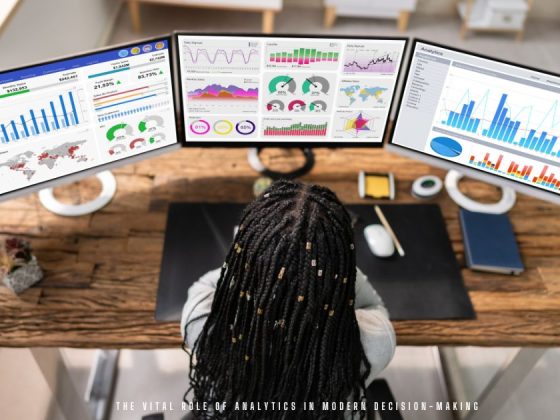Wearable technologies have revolutionized how we interact with technology, making it more personal, convenient, and integrated into our daily lives. From fitness trackers that monitor our health to smartwatches that keep us connected, these devices have become indispensable. In this article, we will explore the best wearable technology available today, the advancements in the field, and the future of wearable devices.
The Evolution of Wearable Technology
Early Beginnings
The concept of wearable technology is not new. It dates back to the early 20th century when the first wearable computers were developed. These devices were rudimentary compared to today’s standards, but they laid the foundation for the innovations we see now. For instance, the development of the first wearable calculator in the 1970s marked a significant milestone in making technology portable and accessible.
The Rise of Fitness Trackers
The modern era of wearable technology began with the introduction of fitness trackers. Devices like the Fitbit, which debuted in 2009, popularized the idea of monitoring health metrics such as steps taken, calories burned, and sleep quality. These early fitness trackers were simple, but they paved the way for more sophisticated devices that could monitor heart rate, blood oxygen levels, and even stress.
Smartwatches: A New Frontier
Smartwatches have become the most popular form of wearable technology. These devices do much more than tell time; they serve as mini-computers on our wrists. With the ability to make calls, send messages, track fitness, and even monitor health, smartwatches have become essential tools for many people. The Apple Watch, released in 2015, is one of the best examples of wearable technology, combining style, functionality, and cutting-edge technology.
The Best Wearable Technology
Smartwatches
Smartwatches are at the forefront of wearable technology, offering a range of features that make them indispensable for many users. Here are some of the best smartwatches available today:
1. Apple Watch Series 9
The Apple Watch Series 9 is the latest iteration of Apple’s popular smartwatch line. It features a faster processor, a brighter display, and new health features, including advanced heart rate monitoring and blood oxygen level tracking. The watch also has improved battery life and enhanced integration with other Apple devices.
2. Samsung Galaxy Watch 6
The Samsung Galaxy Watch 6 is another top contender in the smartwatch market. It runs on Samsung’s Tizen operating system, offering a smooth user experience and a wide range of apps. The watch features a sleek design, long battery life, and advanced health monitoring tools, including ECG and blood pressure monitoring.
3. Garmin Fenix 7
For outdoor enthusiasts and athletes, the Garmin Fenix 7 is one of the best wearable technologies available. It offers advanced GPS tracking, multi-sport modes, and rugged durability. The Fenix 7 also has comprehensive health and fitness tracking features, making it an excellent choice for those who lead an active lifestyle.
Fitness Trackers
Fitness trackers are ideal for those who want to monitor their health and fitness without the bulk of a smartwatch. Here are some of the best fitness trackers available today:
1. Fitbit Charge 6
The Fitbit Charge 6 is one of the best wearable fitness trackers available today. It offers advanced features such as heart rate monitoring, sleep tracking, and stress management tools. The Charge 6 also includes built-in GPS, making it ideal for runners and cyclists.
2. WHOOP Strap 4.0
The WHOOP Strap 4.0 is a unique fitness tracker that focuses on recovery and performance. It monitors metrics such as heart rate variability, sleep quality, and strain, providing insights into how your body is performing and recovering. The WHOOP Strap 4.0 is popular among athletes and fitness enthusiasts who want to optimize their performance.
3. Xiaomi Mi Band 8
The Xiaomi Mi Band 8 offers a great balance of features and affordability. It includes heart rate monitoring, sleep tracking, and basic fitness tracking features. The Mi Band 8 also has a long battery life, making it a reliable option for those who want a simple yet effective fitness tracker.
Smart Glasses
Smart glasses are an emerging category in wearable technology, offering augmented reality (AR) experiences and hands-free access to information. Here are some of the best smart glasses available today:
1. Google Glass Enterprise Edition 2
Google Glass has evolved from a consumer product to a powerful tool for enterprise users. The Google Glass Enterprise Edition 2 offers features such as hands-free access to information, augmented reality overlays, and integration with enterprise applications. These glasses are used in industries such as manufacturing, healthcare, and logistics.
2. Microsoft HoloLens 2
The Microsoft HoloLens 2 is a cutting-edge AR headset that offers immersive experiences for enterprise users. It features advanced sensors, holographic displays, and intuitive hand-tracking controls. The HoloLens 2 is used in industries such as engineering, healthcare, and education, offering new ways to interact with digital information.
3. Vuzix Blade Upgraded
The Vuzix Blade Upgraded smart glasses offer a balance of consumer and enterprise features. They include a built-in camera, AR overlays, and compatibility with both Android and iOS devices. The Vuzix Blade Upgraded is ideal for those who want to explore augmented reality without the bulk of a full AR headset.
Wearable Health Monitors
Wearable health monitors are designed to track specific health metrics, providing users with valuable insights into their well-being. Here are some of the best wearable health monitors available today:
1. Oura Ring Gen 3
The Oura Ring Gen 3 is a smart ring that tracks sleep, activity, and readiness. It offers advanced metrics such as heart rate variability, body temperature, and sleep stages. The Oura Ring is popular among those who want a discreet and stylish way to monitor their health.
2. Eversense Continuous Glucose Monitor (CGM)
The Eversense CGM is a wearable device that continuously monitors glucose levels for people with diabetes. It offers real-time alerts, long-term wear, and easy calibration. The Eversense CGM is a game-changer for those who need to manage their blood sugar levels closely.
3. Withings ScanWatch
The Withings ScanWatch is a hybrid smartwatch that offers advanced health monitoring features. It includes ECG, SpO2 monitoring, and sleep tracking. The ScanWatch is designed for those who want a traditional watch with modern health features.
The Impact of Wearable Technology on Health and Fitness
Personal Health Monitoring
One of the most significant benefits of wearable technology is the ability to monitor personal health metrics in real-time. Devices like smartwatches and fitness trackers can track various health indicators, such as heart rate, sleep quality, and physical activity levels. This data provides users with valuable insights into their health, enabling them to make informed decisions about their lifestyle and well-being.
For instance, the Apple Watch Series 9 includes advanced heart rate monitoring and ECG features that can detect irregular heart rhythms, potentially alerting users to serious health issues before they become critical. Similarly, fitness trackers like the Fitbit Charge 6 offer detailed sleep tracking, helping users understand their sleep patterns and improve their sleep quality.
Fitness and Performance Optimization
Wearable technology has also transformed the way people approach fitness and exercise. Devices like the Garmin Fenix 7 offer comprehensive fitness tracking, including multi-sport modes, GPS tracking, and performance metrics. These features are invaluable for athletes and fitness enthusiasts who want to optimize their training and performance.
The WHOOP Strap 4.0, for example, focuses on recovery and performance by tracking heart rate variability, strain, and sleep quality. This data helps users understand when their bodies are ready for intense exercise and when they need rest, allowing for more effective training and reduced risk of injury.
Chronic Disease Management
Wearable technology is also making a significant impact on the management of chronic diseases. Devices like the Eversense CGM allow people with diabetes to monitor their blood glucose levels continuously, providing real-time alerts and insights that can help prevent dangerous spikes or drops in blood sugar. Similarly, the Withings ScanWatch offers advanced health monitoring features that can detect signs of conditions like sleep apnea, atrial fibrillation, and other cardiovascular issues.
These devices empower users to take control of their health and manage chronic conditions more effectively, potentially reducing the need for frequent doctor visits and improving overall quality of life.
The Role of Wearable Technology in Everyday Life
Convenience and Connectivity
Wearable technology has become an integral part of everyday life for many people, offering convenience and connectivity in a compact form factor. Smartwatches, for example, allow users to stay connected without needing to reach for their phones constantly. With features like notifications, messaging, and voice assistants, smartwatches like the Apple Watch Series 9 and Samsung Galaxy Watch 6 make it easier to manage daily tasks and stay in touch with loved ones.
Wearable devices also offer the convenience of hands-free operation. Smart glasses like the Google Glass Enterprise Edition 2 and Vuzix Blade Upgraded allow users to access information and perform tasks without using their hands, making them ideal for professionals in fields like healthcare, manufacturing, and logistics.
Fashion and Style
Wearable technology is not just about functionality; it’s also about fashion and style. Many wearable devices are designed to be stylish and customizable, allowing users to express their personal tastes while enjoying the benefits of advanced technology. For instance, the Oura Ring Gen 3 is available in various finishes and designs, making it a fashionable accessory that seamlessly blends into any outfit.
Similarly, smartwatches like the Apple Watch Series 9 offer a wide range of customizable bands and watch faces, allowing users to tailor their devices to suit their style. The combination of fashion and technology has made wearable devices more appealing to a broader audience, further driving their adoption.
Challenges and Future Trends
Battery Life and Power Efficiency
One of the significant challenges in wearable technology is battery life. As devices become more advanced and feature-rich, the demand for power increases. However, due to their small form factor, wearables have limited space for large batteries. This constraint leads to frequent recharging, which can be inconvenient for users. For example, while smartwatches like the Apple Watch Series 9 offer a range of functionalities, they typically need daily charging, which can be a hassle for users accustomed to the long battery life of traditional watches.
To address this challenge, manufacturers are focusing on improving power efficiency through better processors and software optimization. Additionally, innovations in battery technology, such as solid-state batteries and more efficient energy harvesting methods (e.g., solar charging), are being explored to extend the battery life of wearable devices. These advancements could significantly enhance the user experience and increase the adoption of wearable technology.
Privacy and Data Security
Another critical challenge in wearable technology is privacy and data security. Wearables collect a vast amount of personal data, including health metrics, location, and daily activities. This data is valuable not only to the users but also to potential cybercriminals. The risk of data breaches and unauthorized access to sensitive information is a significant concern for users and manufacturers alike.
To mitigate these risks, companies must implement robust security measures, including encryption, secure data storage, and regular software updates. Additionally, transparent data policies that inform users about how their data is being used and shared are essential for building trust. As wearable technology continues to evolve, ensuring user privacy and data security will remain a top priority.
Interoperability and Ecosystem Integration
Wearable devices often function best when integrated into a broader ecosystem of products and services. For example, the Apple Watch Series 9 works seamlessly with other Apple devices, such as the iPhone, Mac, and iPad, providing a cohesive user experience. However, interoperability between devices from different manufacturers can be challenging, leading to fragmented user experiences.
To overcome this challenge, there is a growing push for standardization in wearable technology. Industry-wide standards and protocols can help ensure that devices from different manufacturers can communicate and work together effectively. This standardization would allow users to mix and match devices from different brands without sacrificing functionality, ultimately driving broader adoption of wearable technology.
The Future of Wearable Technology
The future of wearable technology is promising, with several exciting trends and innovations on the horizon. As technology continues to advance, wearable devices are expected to become even more integrated into our lives, offering new ways to enhance our health, productivity, and overall well-being.
1. Advanced Health Monitoring
One of the most significant trends in wearable technology is the continued advancement of health monitoring capabilities. Future wearables are expected to offer even more sophisticated health metrics, such as continuous blood pressure monitoring, hydration levels, and early detection of diseases through biomarkers. For example, research is being conducted on wearable devices that can detect early signs of chronic conditions like diabetes or cancer, providing users with critical information to seek medical intervention before symptoms worsen.
2. Wearables in Mental Health
Mental health is another area where wearable technology is expected to make a significant impact. Devices that monitor stress levels, emotional states, and mental well-being are already in development. These wearables can provide real-time feedback and interventions, such as guided breathing exercises or mindfulness prompts, to help users manage their mental health more effectively. This trend aligns with the growing recognition of mental health as a critical component of overall well-being.
3. Integration with AI and Machine Learning
The integration of artificial intelligence (AI) and machine learning (ML) with wearable technology is expected to revolutionize how these devices operate. AI-driven algorithms can analyze the vast amounts of data collected by wearables, providing personalized insights and recommendations to users. For example, AI can help identify patterns in a user’s sleep data and suggest changes to improve sleep quality or predict potential health issues based on activity and biometric trends.
Additionally, AI-powered virtual assistants integrated into wearables could provide more intuitive and context-aware interactions. For instance, a smartwatch could automatically remind a user to take medication based on their daily routine or suggest a workout based on their current energy levels and activity history.
4. Wearables for Augmented Reality (AR) and Virtual Reality (VR)
As AR and VR technologies continue to evolve, wearables are expected to play a crucial role in creating immersive experiences. Smart glasses, in particular, will become more advanced, offering seamless integration with AR applications. These devices could be used for various purposes, including gaming, education, training, and remote collaboration.
For example, future smart glasses could overlay digital information onto the real world, providing users with navigation directions, real-time translation, or even enhancing social interactions by displaying information about the people they meet. In the context of VR, wearables like haptic gloves and suits could provide users with a more immersive and tactile experience, allowing them to feel and interact with virtual objects as if they were real.
5. Wearables for Enhanced Productivity
Wearable technology is also expected to become a powerful tool for enhancing productivity in both personal and professional settings. Devices like smart glasses and smartwatches can provide real-time access to information, hands-free communication, and task management features that help users stay organized and efficient. For example, smart glasses could be used in the workplace to provide real-time data to workers on the production floor, improving accuracy and efficiency.
Moreover, wearables could integrate with productivity software to offer personalized time management and workflow optimization. For instance, a smartwatch could analyze a user’s work patterns and suggest the best times for focused work, meetings, or breaks, ultimately helping users maximize their productivity.
Conclusion
Wearable technology has come a long way since its early beginnings, evolving into a diverse and innovative field that offers a wide range of benefits. From health monitoring and fitness optimization to enhanced productivity and immersive experiences, wearable devices have become an integral part of our lives. The best wearable technology available today, such as the Apple Watch Series 9, Garmin Fenix 7, and Oura Ring Gen 3, exemplifies the remarkable advancements in this space.
As we look to the future, wearable technology is poised to continue its rapid growth, driven by advancements in health monitoring, AI integration, and AR/VR capabilities. While challenges such as battery life, privacy, and interoperability remain, ongoing innovation and standardization efforts are likely to address these issues, paving the way for even more exciting developments.
Ultimately, wearable technology holds the potential to transform how we live, work, and interact with the world around us, making it one of the most exciting and impactful areas of technological innovation in the years to come.





